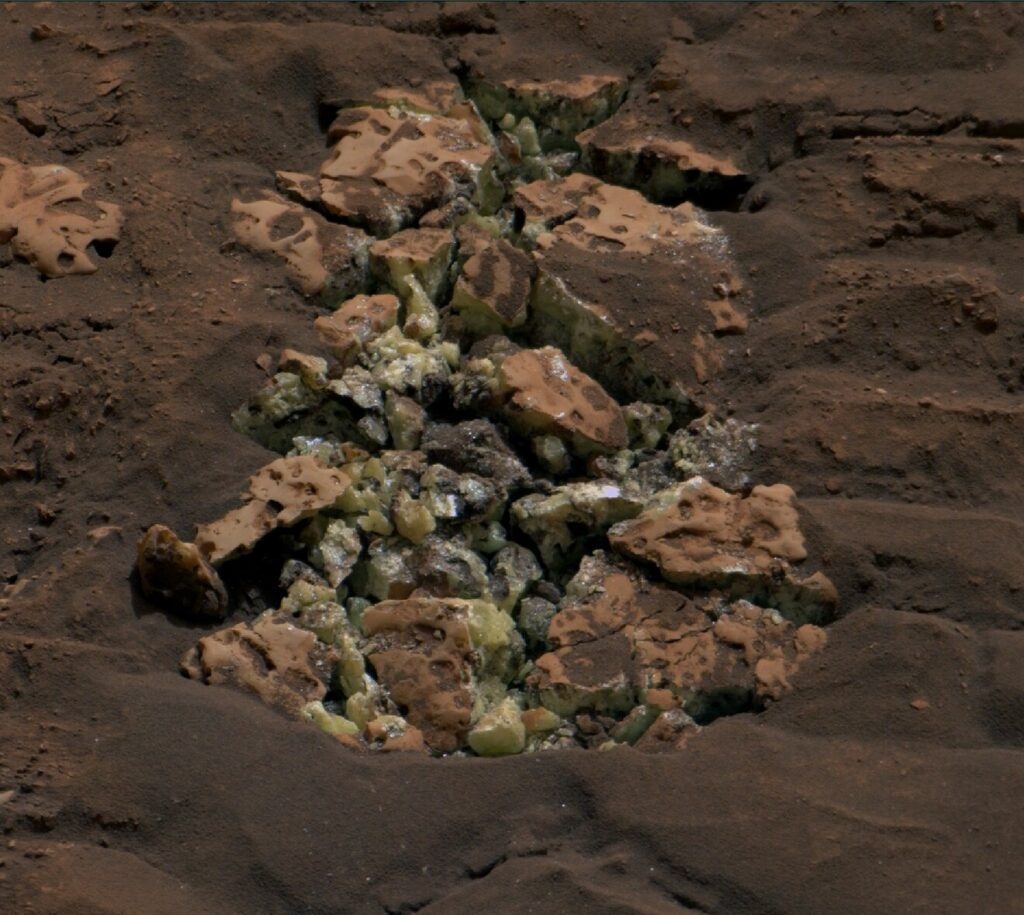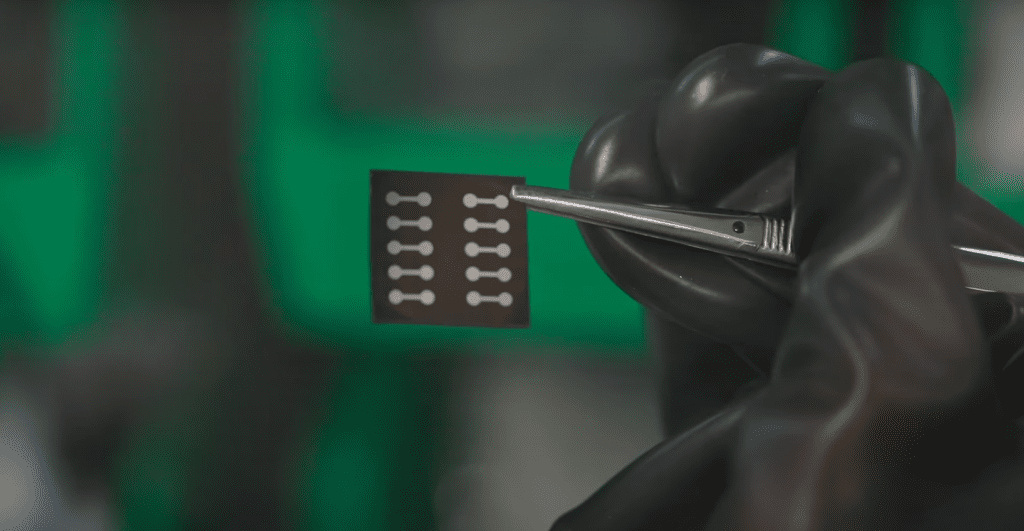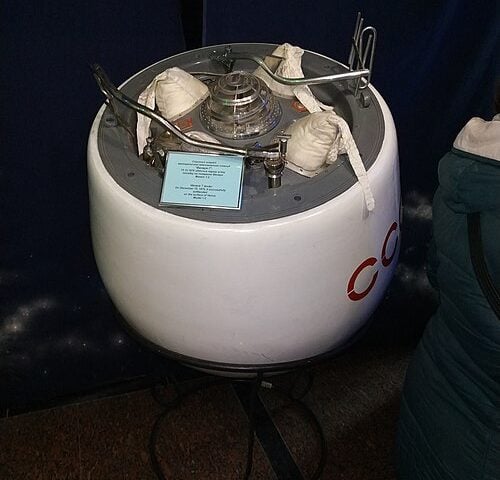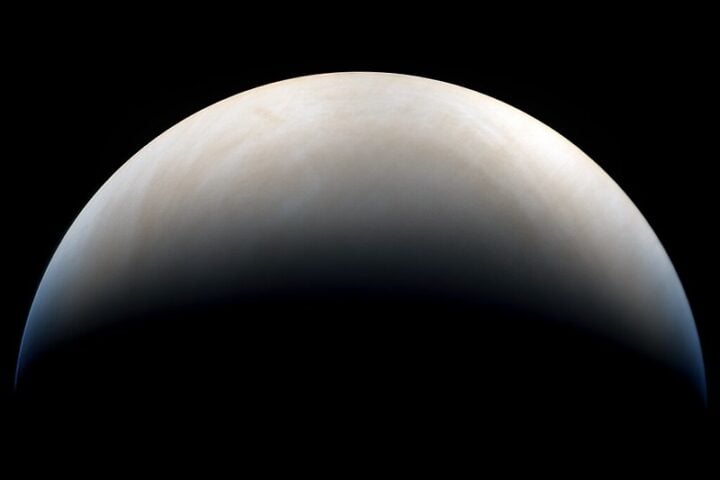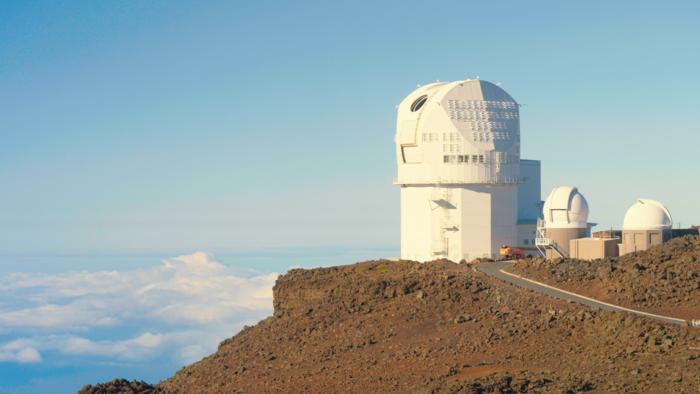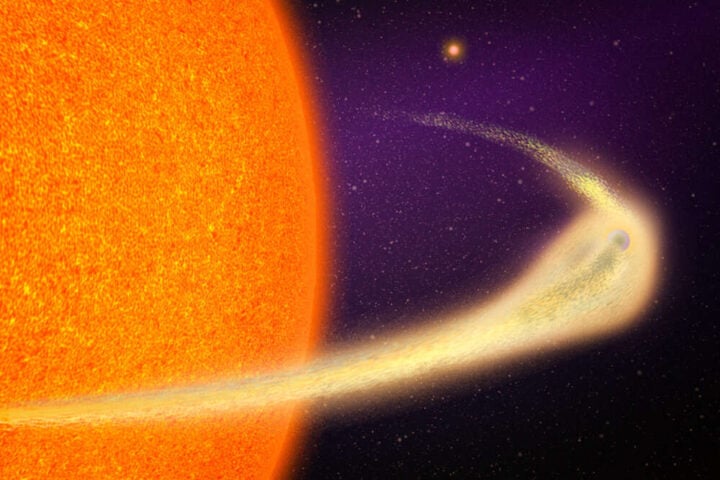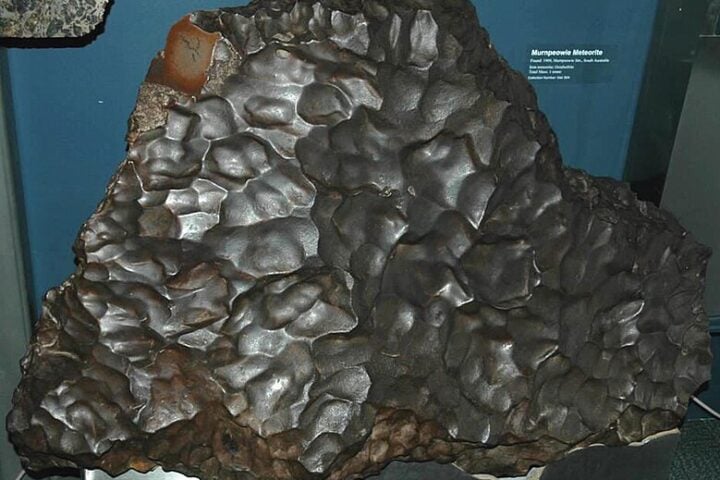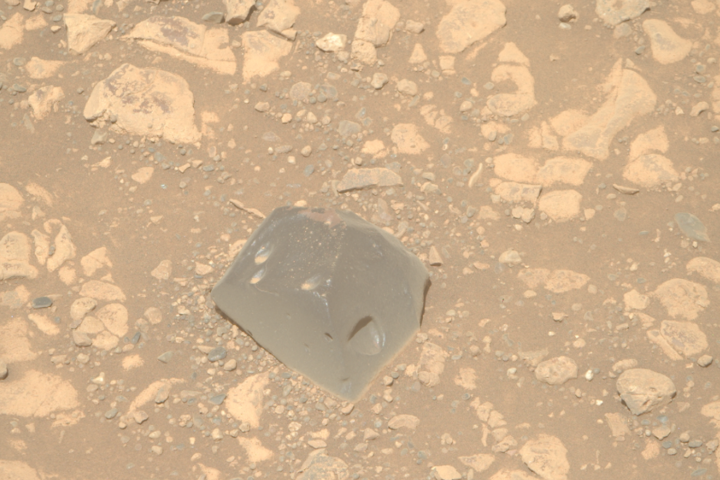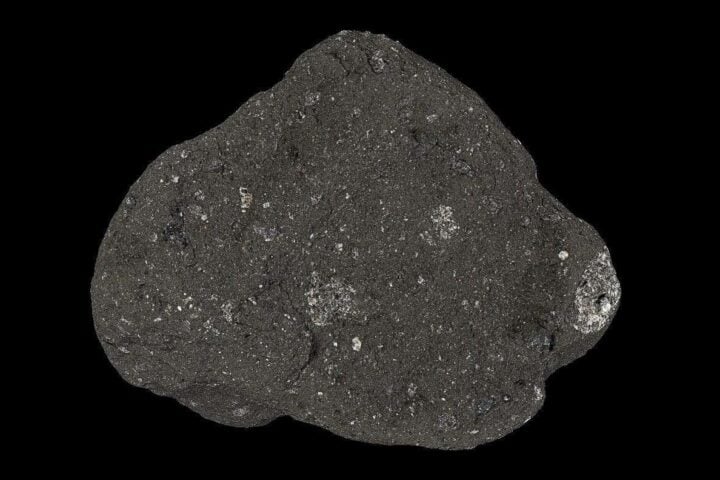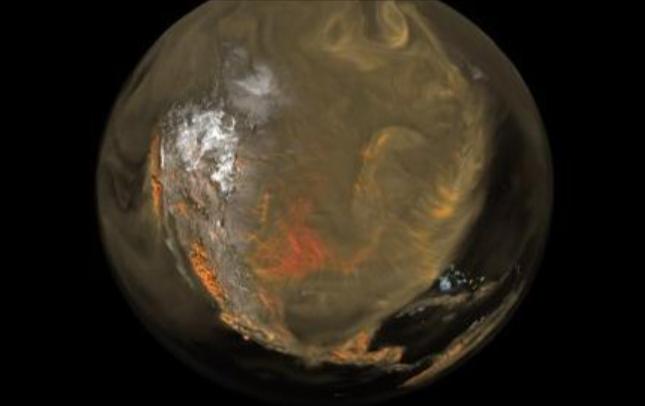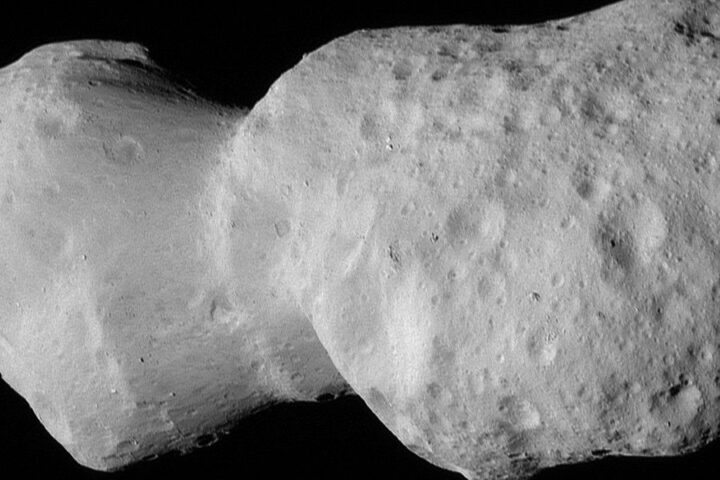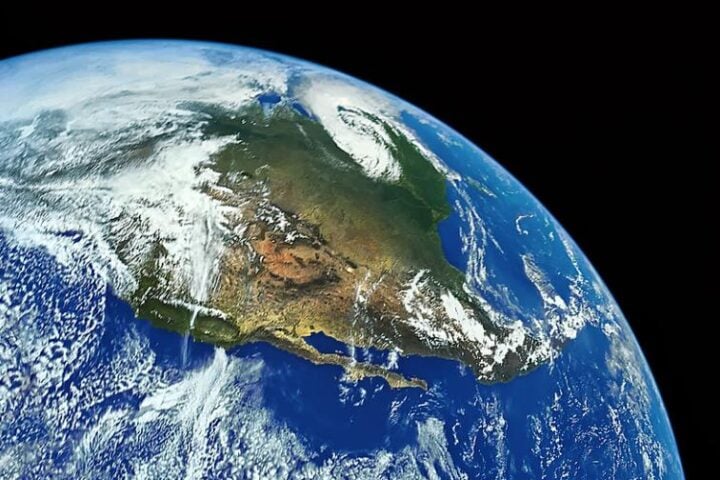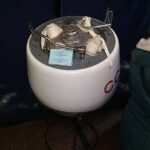NASA’s Curiosity rover has made an unexpected discovery on Mars: pure sulfur crystals. This first-of-its-kind finding on the Red Planet occurred on May 30 when the rover accidentally crushed a rock, revealing its surprising contents. Scientists using the rover’s onboard instruments confirmed that the crystals were elemental sulfur. On June 8, Curiosity captured an image of a rock dubbed “Snow Lake” on the 4,209th Martian day (sol) of its mission. Nine days earlier, the rover had crushed a similar rock, uncovering crystalline textures and elemental sulfur within. This discovery is notable because, until now, only sulfur-based minerals—combinations of sulfur with other materials—had been detected on Mars.
Since October 2023, Curiosity has been exploring a sulfate-rich region, a type of salt that forms as water evaporates. However, finding a field of rocks composed of pure sulfur is an unexpected finding that raises new questions about Mars’ geological history. Elemental sulfur forms under specific conditions that were not previously associated with this area of Mars. “Finding a field of stones made of pure sulfur is like finding an oasis in the desert,” said Ashwin Vasavada, Curiosity project scientist at NASA’s Jet Propulsion Laboratory in Southern California. “It shouldn’t be there, so now we have to explain it. Discovering strange and unexpected things is what makes planetary exploration so exciting.”
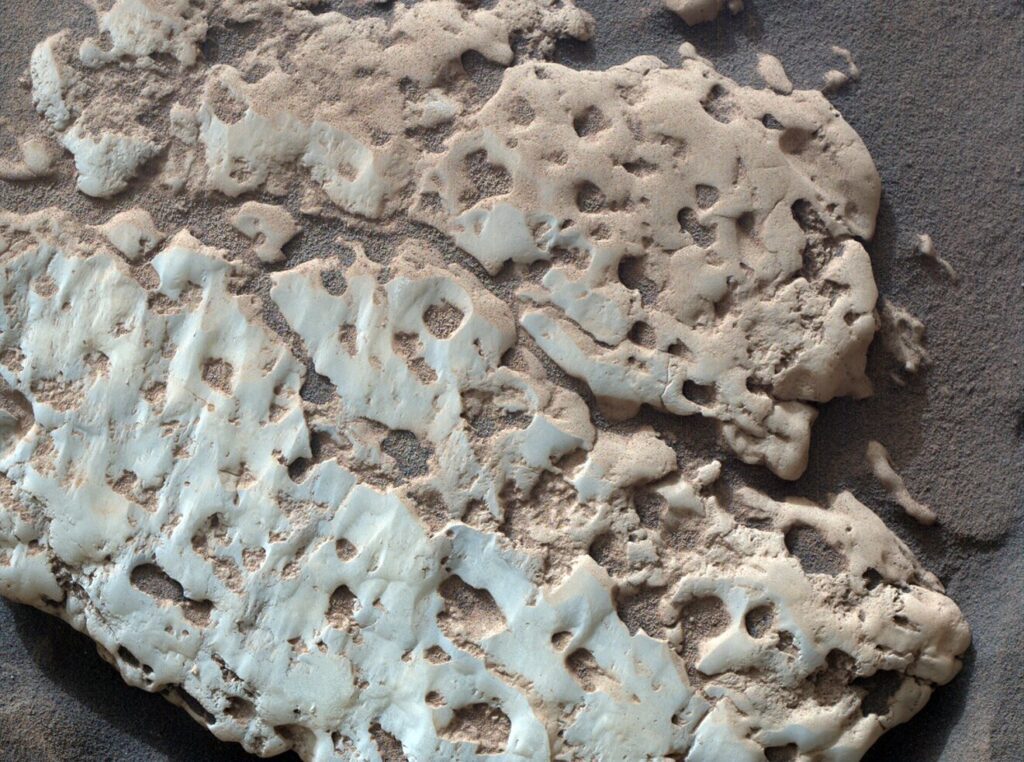
NASA’s Curiosity captured this close-up image of a rock nicknamed “Snow Lake” on June 8, 2024, the 4,209th Martian day, or sol, of the mission. Nine days earlier, the rover had crushed a similar-looking rock and revealed crystalline textures — and elemental sulfur — inside. Credit: NASA/JPL-Caltech/MSSS
This discovery is one of several made by Curiosity while exploring the Gediz Vallis channel, a formation winding through Mount Sharp, a five-kilometer-high mountain that the rover has been ascending since 2014. Each layer of this mountain represents a different period of Martian history, and Curiosity’s mission is to study these strata to understand when and where Mars might have harbored microbial life. Gediz Vallis was identified from space before Curiosity’s launch as an important target due to its likely formation by flows of liquid water and debris. Scientists are investigating whether ancient floods or landslides created the debris mounds found in the channel. Recent clues suggest that both phenomena played a role: some mounds were left by violent water and debris flows, while others seem to result from local landslides.
On June 18, Curiosity drilled its 41st hole in a large rock dubbed “Mammoth Lakes” to obtain samples for further analysis. While the sulfur rocks were too small and fragile to be sampled with the drill, Mammoth Lakes provided a suitable opportunity for sample collection. Curiosity’s team continues to explore the Gediz Vallis channel, searching for more surprises and discoveries that could help unravel Mars’ complex geological history. This discovery of pure sulfur not only adds a new dimension to our understanding of Mars but also highlights Curiosity’s capability to make significant scientific findings while exploring the challenging terrain of the Red Planet.
Similar Posts
According to NASA, scientists were astonished on May 30, 2024, when a rock that NASA’s Curiosity Mars rover drove over split open, revealing something never before seen on the Red Planet: yellow sulfur crystals. While previous detections were of sulfur-based minerals (a mix of sulfur and other materials), the recently opened rock contained elemental (pure) sulfur. It’s unclear what, if any, relationship exists between the elemental sulfur and other sulfur-based minerals in the area. Although people associate sulfur with the smell of rotten eggs (due to hydrogen sulfide gas), elemental sulfur is odorless. It forms only under a narrow range of conditions that scientists haven’t associated with this location’s history. Curiosity found a substantial amount: an entire field of bright rocks similar to those the rover crushed.
The Gediz Vallis channel, spotted from space years before Curiosity’s launch, is one of the main reasons the science team wanted to visit this part of Mars. Scientists believe the channel was carved by flows of liquid water and debris that left a ridge of rocks and sediments stretching three kilometers down the mountainside below the channel. The goal has been to develop a better understanding of how this landscape changed billions of years ago, and although recent clues have helped, there is still much to learn from this spectacular landscape. Since Curiosity arrived at the channel earlier this year, scientists have been studying whether the large piles of debris rising from the channel’s floor resulted from ancient floods or landslides. Curiosity’s latest clues suggest both factors played a role: some debris piles likely resulted from violent water and debris flows, while others seem to be the result of more local landslides.
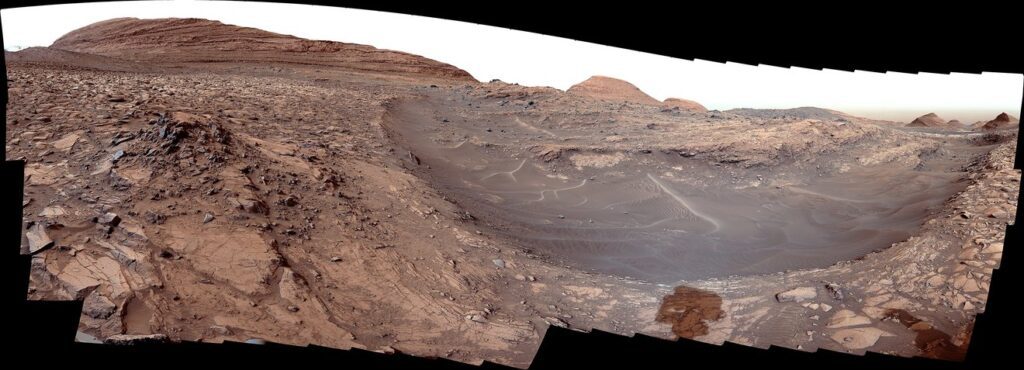
Credit: NASA/JPL-Caltech/MSSS
These conclusions are based on the rocks found in the debris mounds: while stones carried by water flows round out like river rocks, some debris mounds are filled with more angular rocks that may have been deposited by dry avalanches. Finally, water filtered through all the material that had settled here. Chemical reactions triggered by the water bleached some of the rocks, forming “halos.” Wind and sand erosion have revealed these halos over time. “This was not a quiet period on Mars,” said Becky Williams, a scientist at the Planetary Science Institute in Tucson, Arizona, and deputy principal investigator of Curiosity’s Mastcam. “There was an exciting amount of activity here. We’re looking at multiple flows down the channel, including energetic floods and boulder-rich flows.”
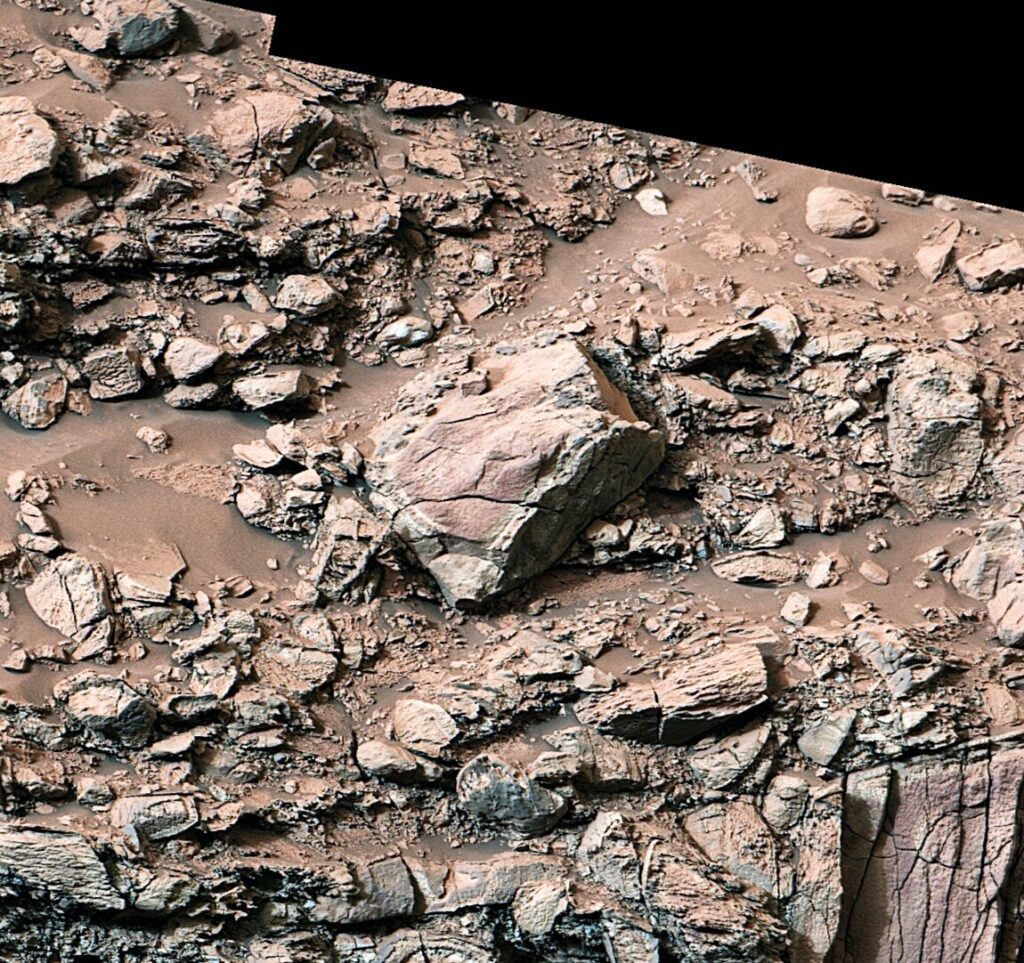
Credit: NASA/JPL-Caltech/MSSS
In May, while exploring the Gediz Vallis channel, Curiosity captured this image of rocks showing a pale color near their edges. These rings, also called halos, resemble the marks seen on Earth when groundwater filters into rocks along fractures, causing chemical reactions that change the color. All this water evidence continues to tell a more complex story than the team’s initial expectations, and they were eager to take a rock sample from the channel to learn more. On June 18, they got their chance. While the sulfur rocks were too small and brittle to be sampled with the drill, a large rock dubbed “Mammoth Lakes” was spotted nearby. Rover engineers had to find a part of the rock suitable for safe drilling and a place to park on the loose, inclined surface. After Curiosity drilled its 41st hole using the powerful drill on the end of the rover’s two-meter robotic arm, the six-wheeled “scientist” dropped the powdered rock into instruments inside its belly for a deeper analysis, allowing scientists to determine the materials the rock is made of.
